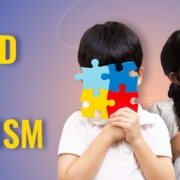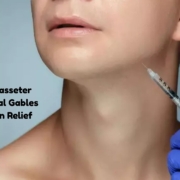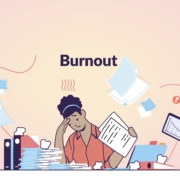Addressing Co-Occurring Disorders in New Jersey’s Addiction Treatment Centers
Introduction
Co-occurring disorders—where substance use disorders intersect with mental health conditions—represent one of the most intricate challenges in modern addiction treatment. In New Jersey, the demand for integrated, nuanced care has never been more critical. With opioid misuse, anxiety, depression, and PTSD rising concurrently, treatment centers must evolve or risk perpetuating cycles of relapse and institutional inefficacy.
Defining Co-Occurring Disorders
Co-occurring disorders, often referred to as dual diagnoses, involve the simultaneous presence of a mental health disorder and a substance use disorder in a single patient. These conditions do not exist in isolation; they exacerbate one another in a pernicious feedback loop. Common pairings include alcohol dependence with depressive disorders, opioid addiction with post-traumatic stress disorder (PTSD), and stimulant misuse with bipolar disorder.
A misdiagnosis or failure to recognize one side of the equation frequently leads to substandard outcomes. Treating the addiction without addressing the underlying trauma or mood disorder is akin to mopping up a flood while leaving the tap running.
A Safer Step Toward Recovery
In recent years, accessibility to medication-assisted treatment has transformed how individuals manage opioid dependency. One notable advancement is the option to purchase suboxone strips online, a discreet and efficient method that appeals to those in remote or underserved areas. These strips combine buprenorphine and naloxone to alleviate withdrawal symptoms while deterring misuse.
However, it is essential to source them from certified pharmacies to avoid counterfeit products. The convenience of online availability, when combined with medical oversight, empowers individuals to take control of their recovery journey, reducing barriers that once made consistent treatment difficult or even impossible.
Prevalence of Co-Occurring Disorders in New Jersey
New Jersey’s public health data illustrates a concerning picture. According to state reports, nearly 40% of individuals seeking addiction services also exhibit symptoms of mental health disorders. These figures likely underrepresent the true scope due to stigma and underreporting.
Urban areas such as Newark and Camden show higher concentrations of co-occurring diagnoses, driven by socioeconomic stressors, violence exposure, and housing instability. Meanwhile, rural counties face an equally daunting challenge: access. Sparse availability of qualified mental health professionals in these regions often results in long wait times and limited dual-diagnosis programs.
The Importance of Integrated Treatment Models
Historically, mental health and addiction were treated in silos. Patients bounced between psychiatrists and substance abuse counselors, with little communication between disciplines. This fragmented approach often led to contradictory treatment plans and patient burnout.
Integrated treatment models, by contrast, approach the patient holistically. They synchronize psychiatric support, behavioral therapy, and medication-assisted treatment (MAT) under one umbrella. Evidence from the Substance Abuse and Mental Health Services Administration (SAMHSA) underscores the efficacy of integrated care: higher retention rates, reduced hospitalization, and improved quality of life are well-documented outcomes.
Challenges Facing Treatment Centers
Despite these advancements, treatment centers in New Jersey grapple with formidable barriers. Chief among them is a dearth of cross-trained clinicians. Many professionals specialize in either addiction or mental health, but not both. This specialization gap complicates the delivery of cohesive care.
Additionally, stigma continues to act as a silent saboteur. Individuals from marginalized communities—particularly Black, Latino, and LGBTQ+ populations—often encounter judgment and cultural insensitivity, discouraging them from seeking help. Even within the system, patients may be mislabeled as “noncompliant” when, in fact, their symptoms reflect untreated psychiatric distress.
Innovative Practices in New Jersey’s Treatment Centers
Amidst the challenges, some centers are pioneering a more enlightened path. Trauma-informed care, which emphasizes safety, empowerment, and transparency, is gaining traction. Recognizing that many addictions stem from unresolved trauma, this approach reframes treatment from one of correction to one of healing.
Holistic therapies, such as mindfulness meditation, art therapy, and equine-assisted therapy, are also proving beneficial, especially when used in tandem with cognitive-behavioral therapy (CBT) and dialectical behavior therapy (DBT). Moreover, some institutions are establishing formal partnerships between mental health clinics and addiction recovery programs, fostering continuity of care and reducing bureaucratic friction.
Two Paths in Opioid Intervention
Though often confused due to their similar names, naltrexone and naloxone serve distinct roles in the realm of opioid intervention. Naltrexone is primarily used as a long-term treatment to reduce cravings and prevent relapse in individuals recovering from opioid or alcohol dependence. In contrast, naloxone acts rapidly to reverse opioid overdoses, restoring normal respiration in minutes.
While both are opioid antagonists, their pharmacological applications diverge significantly. Understanding the difference between naltrexone vs naloxone is essential for clinicians and patients alike, ensuring the right medication is used at the right moment in the recovery or emergency response process.
Policy and Funding Landscape
Legislative action has begun to reflect the urgency of the crisis. New Jersey’s Opioid Reduction Act and expanded Medicaid coverage for behavioral health services mark promising shifts. These initiatives allocate funding for integrated care models and incentivize treatment centers to hire dually licensed clinicians.
However, insurance limitations remain a persistent obstacle. Many private insurers still place restrictive caps on mental health services or require burdensome prior authorizations, delaying care when patients are most vulnerable.
Conclusion
The treatment of co-occurring disorders demands more than clinical competence—it requires a compassionate, systemic transformation of how we perceive addiction and mental illness. New Jersey stands at a crossroads: continue with fragmented care or invest in an integrated future.
The path forward lies in a blend of evidence-based practice, community-driven policy, and above all, empathy. As treatment centers adopt innovative approaches and lawmakers align funding with holistic goals, the vision of comprehensive, dignified care for every New Jerseyan struggling with co-occurring disorders becomes not just possible—but imperative.











